Video: What’s in your livestock shed? visits a sheep dairy
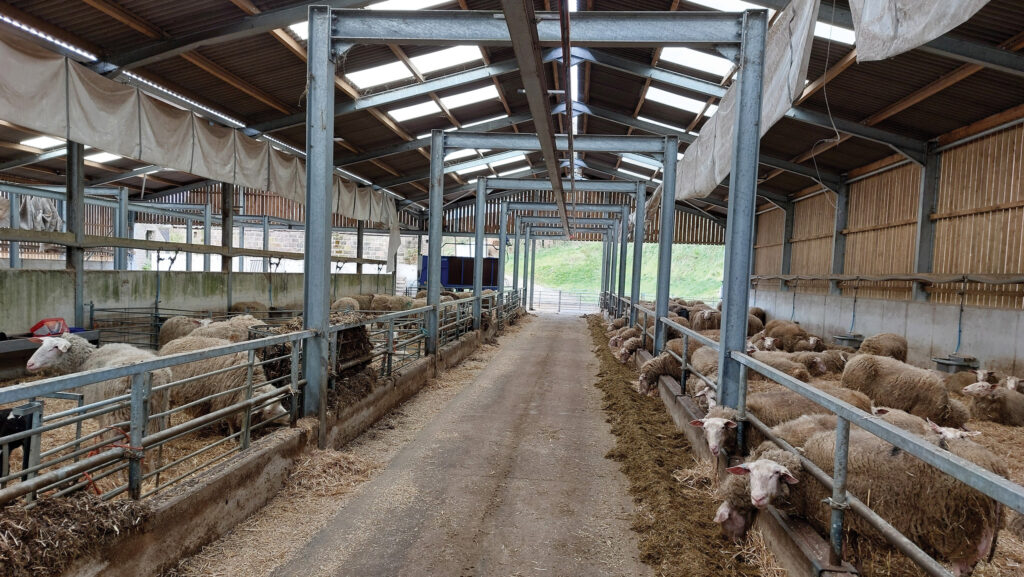 © MAG/Shirley Macmillan
© MAG/Shirley Macmillan Having always kept a small flock of Mules, vets John Bailey and Heather Benbow have now realised their dream to make cheese from their own milking flock.
The couple sold their vet practice to fund the purchase of two former dairy farms, near Matlock in Derbyshire, in 2017 and set up a sheep dairy and cheesemaking plant.
Their ultimate goal is to make Wakebridge Manor Farm a full tourist attraction, adding a hotel, bar and restaurant.
See also: What’s in Your Livestock Shed? New calf-rearing unit eases pressure
To start, they imported 160 East Friesian milking sheep from Germany, with a view to putting cups on in 2019.
However, as John says, there was Covid, then a war in Ukraine. “This put us three years behind schedule.”
Milking finally began last July, and in December they gained permission to supply the public with cheese.
Watch the video story below.
How did you come up with the design?
We’re both members of the Sheep Veterinary Society and talked to other sheep producers to get ideas.
What were your priorities?
Efficiency and flow. For welfare reasons we wanted to maximise space and provide optimal ventilation.
Each ewe has at least 1.8sq m, rising to 2sq m depending on stocking density. The shed has open ridges and a positive-pressure tunnel ventilation system.
We laid limestone floors under the bedded area with the aim of improving drainage and reducing ammonia build-up. We also wanted fully automated feeding.
Farm facts: Wakebridge Manor Farm, Crich, Derbyshire
-
105ha owned across four sites
-
650 ewes in-milk year round
-
Lambing three times in two years for consistent milk quantity and quality for cheese
-
Lambing in 10-day period
-
Six-month lactation
-
Sheep milk spot price is £1.60/litre
-
Ewes produce four litres/day on once-a-day milking
-
Each ewe gets 1.8kg nuts with 5kg silage in the shed, plus 0.6kg nuts at milking
The DeLaval Optimat system is set on a timer to feed twice a day and push up four times. It drove the design, as we needed a central gantry for the feeder.
We also made the layout so that sheep walk out at one end of the shed to the parlour and back. At the opposite end, we can separate [sick] sheep to be milked last.
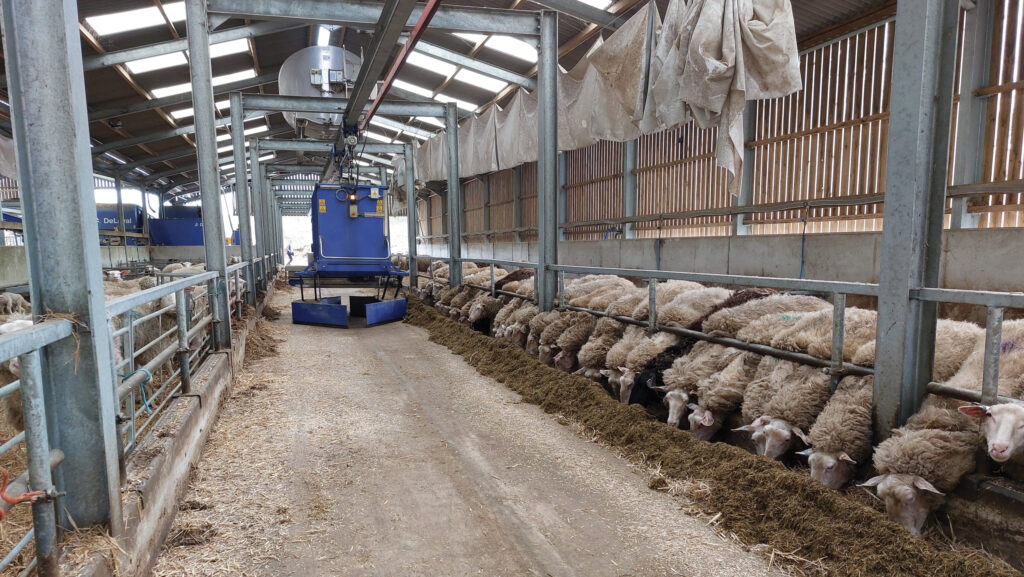
© MAG/Shirley Macmillan
We went for continental-style drive-through silage clamps to aid consolidation, and these are sited opposite the feed station for efficiency.
We have three, and they hold 500t of silage wholecrop pea and barley plus grass.
What about site aspect and planning permission?
The shed was built on a site that had not been farmed and served as a bit of a scrapyard.
We had to dig out a bank to put the shed in so that it was one level and not tiered. A large part of the cost was groundworks.
The auto-feeding machines only work on a level – otherwise, we would have had to tier it – and they are £150,000 each.
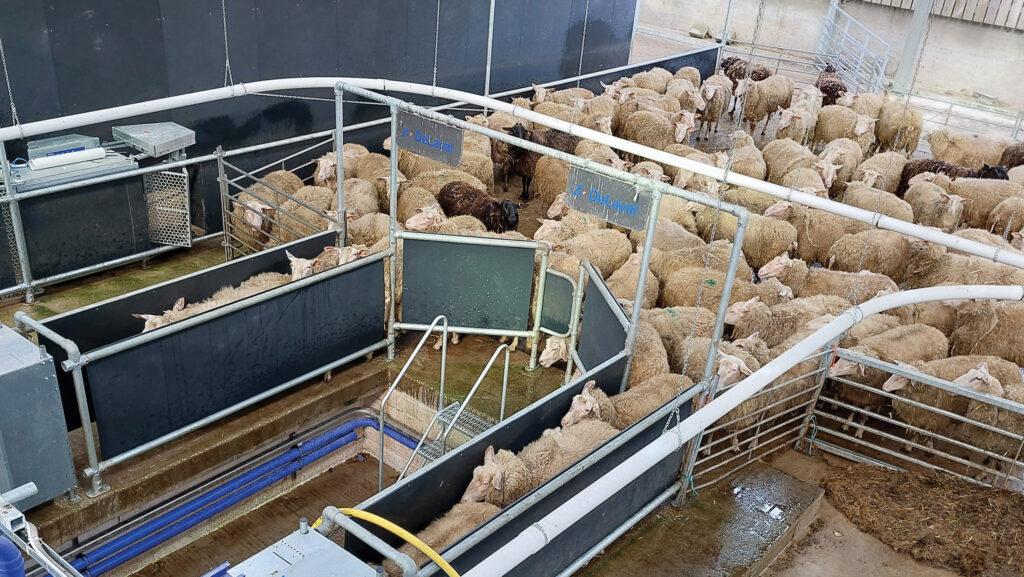
© MAG/Shirley Macmillan
Who did the plans and groundworks?
John Milhouse Design and Planning in Derby did the designs and got the planning permission; the architect was Clive Williams from Nottingham who supplied drawings for parlour and creamery.
Barry Dring Plant hire did the groundworks; Brian Gadsby erected the steel portal frame buildings and converted the barn into a creamery.
Tell us about the shed’s specs and layout
The shed is 60x26m and contains two full-length yards and two shorter ones to accommodate the feed kitchen. The kitchen comprises two hoppers for silage and two for minerals.
Outside, there is a 20t silo for concentrates. Each yard is 3m wide and has mains water troughs. Supply will eventually be replaced by a rainwater catchment system.
There’s a large bulk tank suspended above the central passage which holds whey from the creamery and supplies a trough in each yard for ad-lib feeding to sheep and lambs.
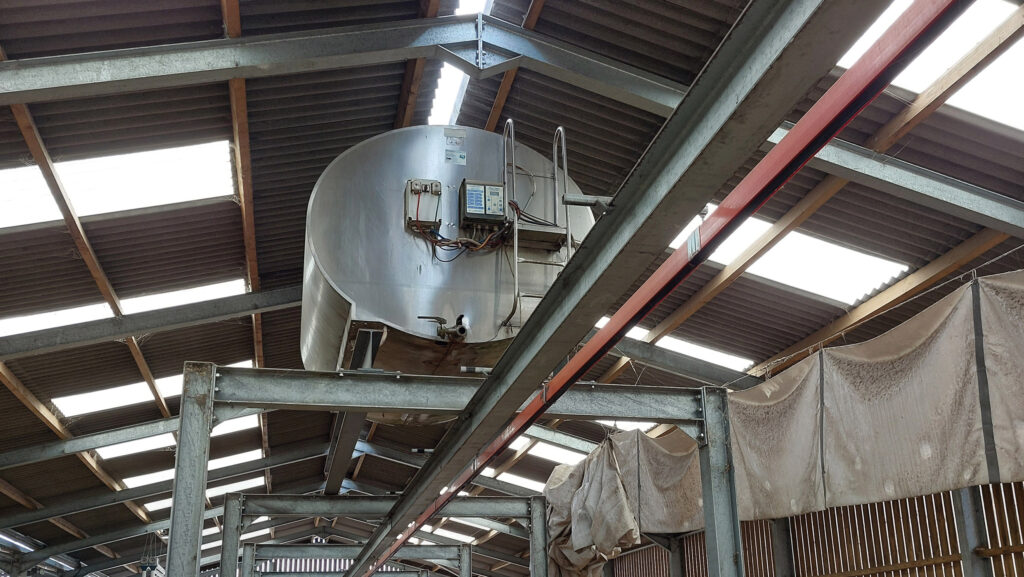
© MAG/Shirley Macmillan
What drainage system did you install?
Clean surface water diverts to a pond.
Under each sheep yard there is a drainage pipe leading to an underground tank, which collects urine, parlour washings and rainfall onto concrete; we then spray this on fields.
What’s your favourite feature?
It ventilates well. It is very light to work in. I’m pleased with the feed system – it’s an immense labour-saving device – and it works well for milking.
What sort of parlour did you install?
A Delaval 36/36 rapid exit. Two people can milk 200-300 sheep an hour.
There are cluster removers, and sheep are fed in two drops during milking, because once they have eaten, they tend to try to back out and knock the clusters off.
Ewes have ear tags read on entry to the parlour and milk yield is recorded. There is auto-shedding on exit if we need to separate sheep into a pen.
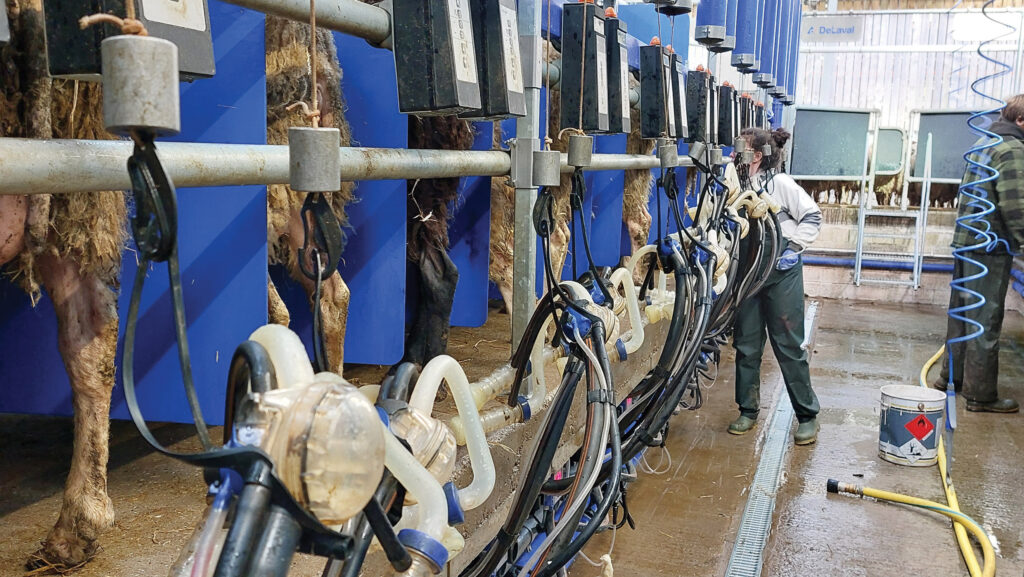
© MAG/Shirley Macmillan
What was your budget, and did you stick to it?
The creamery budget started at just over £1.035m, including an EU Rural Development Programme grant of £414,000 to convert an old shed for cheese.
The additional sheep shed, groundworks, feeding, parlour and concrete budget was £1.2m. But being three years late, we were twice over our budget.
There were opportunity losses while we weren’t milking, and massive inflation. Concrete prices rose 60-70% and stainless steel doubled.
Because we went over budget, we secured a £1m loan and a big overdraft facility from Jonathan Powell at Virgin Money, which helped us a lot.
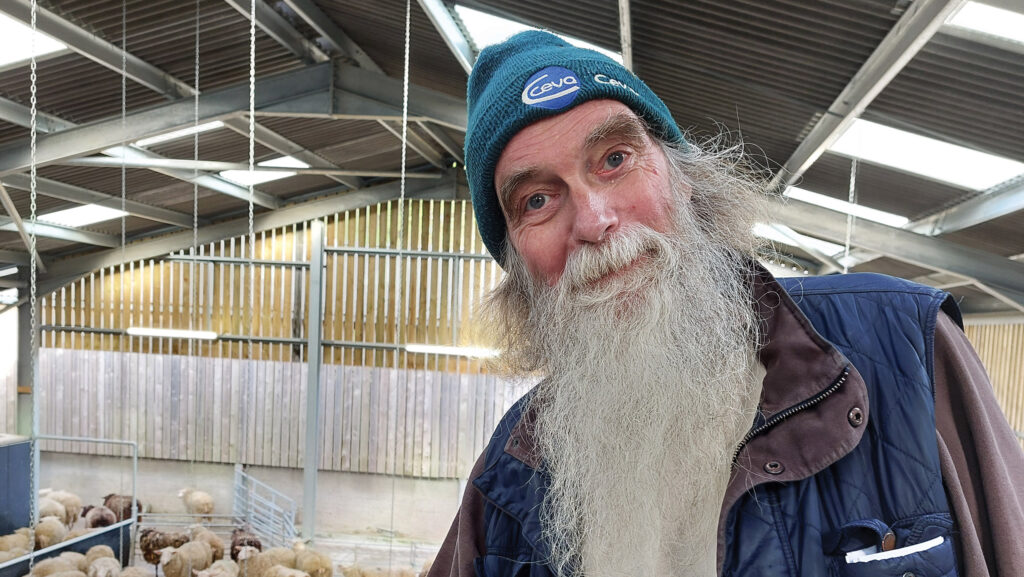
John Bailey © MAG/Shirley Macmillan
Any teething problems?
The feeder is too tight on turning the corner in the feed passages.
The distance it creates means it cannot feed or push up right to the fence on one side, so the sheep have to stretch to reach feed.
What tweaks will you need to make?
This will be our first year milking at shearing time – we normally shear in May/June.
We’ll need to try and bring the shearing rig up here. To finish the shed, we need to add steel-clad sheeted doors and roller blinds for wind control.
As well as finding a solution to the off-track feeding, we want to raise the clamp side walls by 1m to double silage capacity, as they cannot be lengthened.
In hindsight, I wish I had put in bigger clamps from the start.
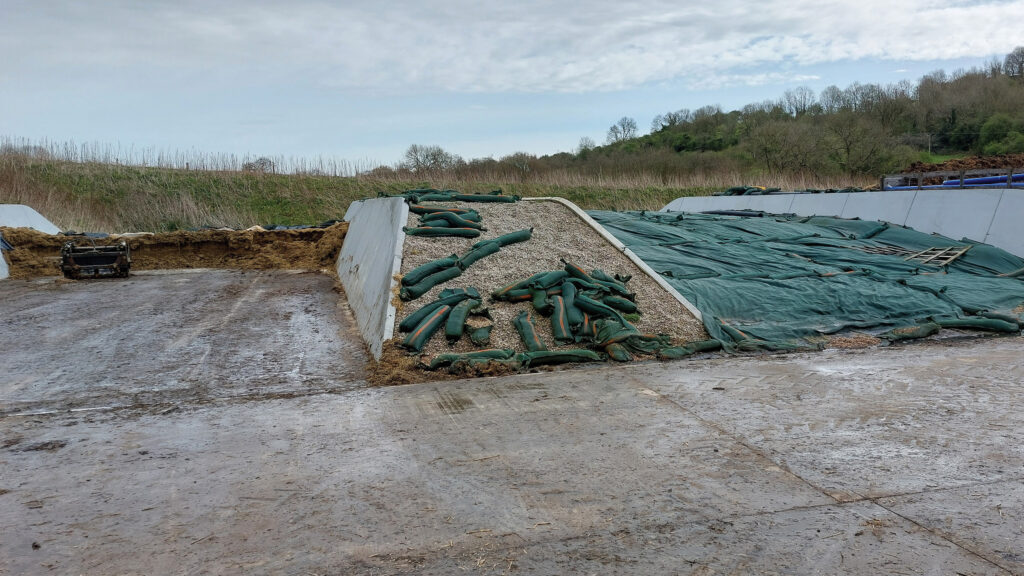
© MAG/Shirley Macmillan
© MAG/Shirley Macmillan
If you had to change one thing, what would it be?
The limestone floors have not made enough difference to drainage or ammonia levels.
If I were to do it again, I would use concrete – it is a nightmare to muck out.
How have you future-proofed it?
We can extend the shed once we have paid to stabilise the field bank; then it will hold 850 ewes.
We also have planning permission to convert the listed stone buildings into a hotel, restaurant and bar.
We want to set up a viewing platform for visitors above the parlour, which will connect to a gantry in the sheep housing.
There is also space for a staff room and offices.
